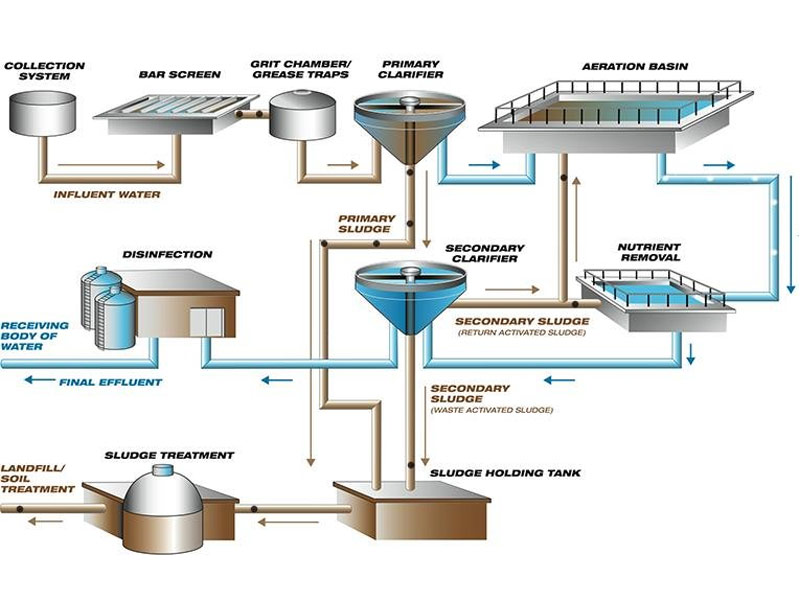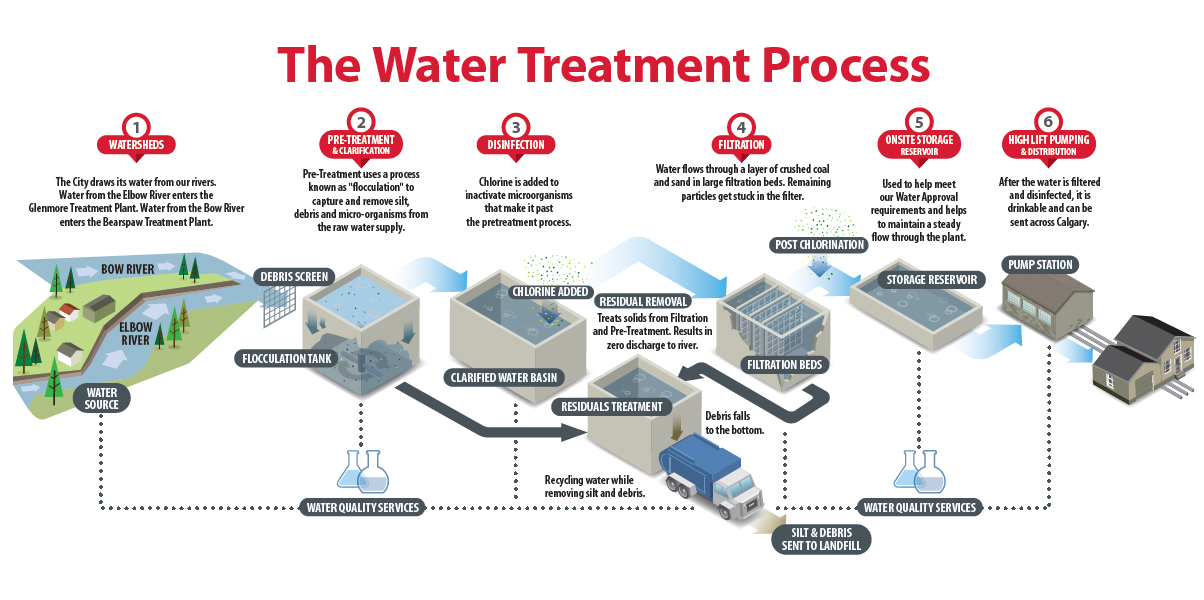The smart Trick of Best Water Filtration For Well Water That Nobody is Discussing
Table of ContentsRumored Buzz on Best Water Filtration For Well WaterThe Basic Principles Of Best Water Filtration For Well Water How Best Water Filtration For Well Water can Save You Time, Stress, and Money.The Single Strategy To Use For Best Water Filtration For Well Water
These volumes stand for a 2 to 3 day supply of water for the 2 therapy plants. The storage space in the incurable reservoirs offer a consistent supply of raw water for the treatment plants ought to any type of disturbance in raw water delivery occur because of either line breaks or regular maintenance. Coagulation, Flocculation & Sedimentation Raw water from the terminal storage tanks flows right into clarifiers where sediment and also other particle issue are eliminated by processes called coagulation, flocculation and sedimentation.Flocculation after that takes place as these bits clump together and develop flocs, or clumps of debris and also particle issue. These flocs after that work out to the base of the clarifier (sedimentation) where rake-like structures gradually scoop the solid matter out. Clear, sediment-free water leaves the clarifier from the top and also moves onto the following action in the treatment process.
Filtering After water has gone via the flocculation and sedimentation procedure to eliminate the sediment/particulate matter, it moves via filters composed of layers of crushed anthracite coal, sand as well as crushed rock. The purification procedure removes additional min fragments which are not gotten rid of by the flocculation and sedimentation process. Disinfection & Chemical Addition A number of chemicals are included to the water throughout the various procedures to help with water treatment.

Storage & Distribution Once treated as well as decontaminated, consuming alcohol water is saved in covered tanks called clear wells. The city stores several millions of gallons of treated water in clear wells on the treatment plant sites prepared for distribution.
What Does Best Water Filtration For Well Water Do?
Degrees in the towers are monitored remotely and generally are filled each evening using off peak pumping methods. Towers and also raised tanks assist preserve stress in the circulation system to ensure that each household and also company has adequate flow.
In order to meet the demands of an expanding population, it's vital that we harvest as much water as we perhaps can to conserve this valuable source. Before water can be considered fit for human consumption, it needs to go through a strenuous water treatment procedure.

Coagulation. After the coagulant has been contributed to the water, it must be mixed at differing speeds over an amount of time to allow the flocs to develop (this part of the procedure is called flocculation). Sedimentation and also information. When the flocs have actually developed, the water is passed over a sedimentation container.
Not known Details About Best Water Filtration For Well Water
Filtration. With the bigger bits taken out of the water, it has to now be infiltrated a selection of media such as sand, gravel or granular activated carbon Learn More Here to remove the smaller sized unwanted particles which still continue. Sanitation. The remaining water has now had the huge bulk of its contaminations got rid of, but it might still consist of bacteria, infections and also other microbes.
The complying with are numerous kinds of water high quality renovation systems, which might or may not apply to have a peek at these guys your certain water troubles. Discuss the options available to you with your water high quality enhancement specialist. Carbon Purification Purification Ion-exchange Demineralization Ion-exchange Conditioning Iron or Oxidizing Purification Counteracting Purification Ozone Pot Feeders or Chemical Feed Pumps Reverse Osmosis Sand Purification Debris Filtering Ultra-violet Sterilization Any type of technique various other than those listed above should be investigated very carefully prior to purchasing.
Be wary of any type of sales representative who may suggest that a certain modern technology will boost all water issues, or call for no maintenance. Consuming alcohol Water A point-of-use water quality enhancement professional can suggest systems for boosting preference, odor as well as quality of your water system. Below are one of the most common techniques available to enhance the top quality of drinking water.

Some Known Incorrect Statements About Best Water Filtration For Well Water
After the schumtzdecke is gotten rid of, the microorganisms have to be allowed a number of days to reestablish an area prior to filtering can resume. Slow-moving sand filtering systems have been made use of for years; the initial systems operated in London in the 19 th century. Nonetheless, slow sand filtering systems call for big areas of land to run, because the circulation rate of the water is in between 0.
Quick sand filtration is a physical process that removes suspended solids from the water. Rapid sand filtration is click here for more much more common than flow sand purification, because fast sand filters have relatively high circulation rates as well as call for relatively little room to operate.
A membrane layer filtering system may additionally be called a particlefilter. Particles with a size above one millimeter, such as gravel and also sand, areremoved via the sedimentation process. Particles with a size greater than 100 microns (or 0. 1 millimetre), such as fine sand, are eliminated with sand purification. As the pore size lowers, a greater proportion of product is maintained as the water travels through the filter.